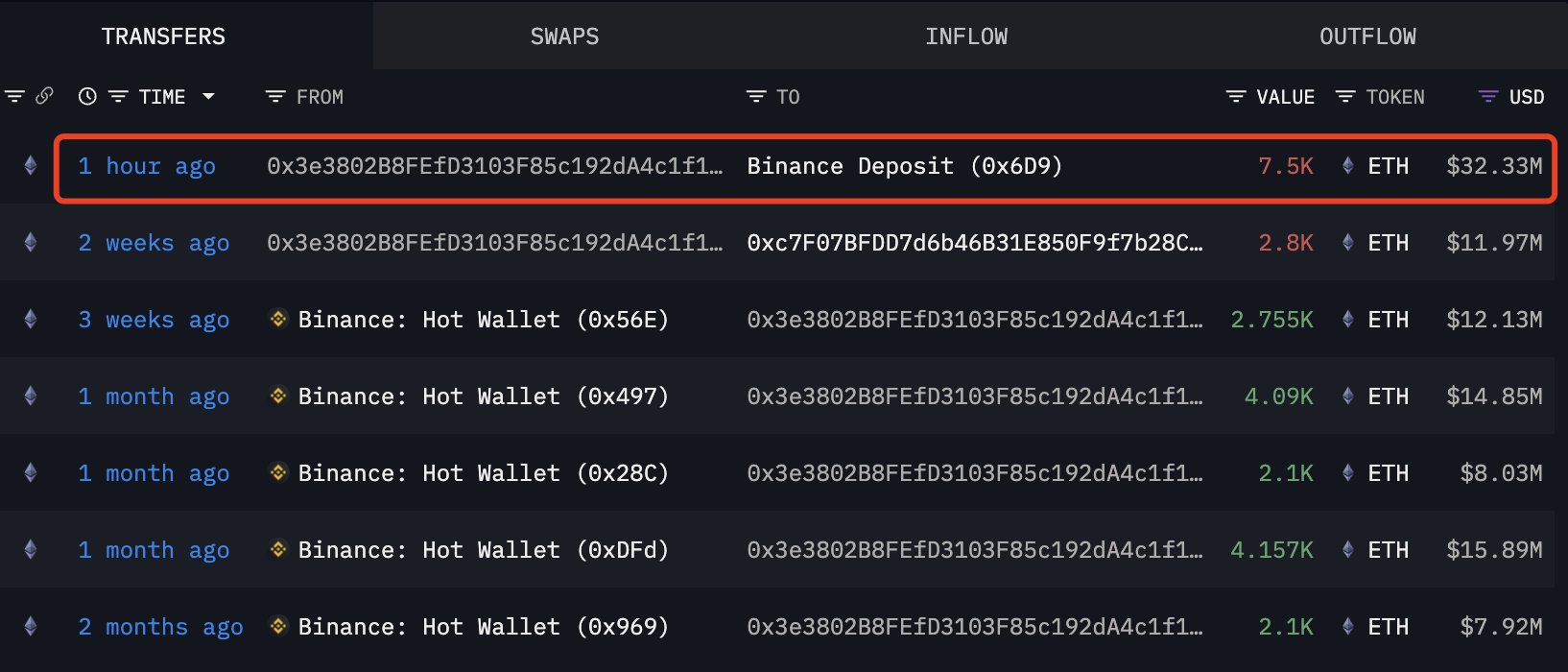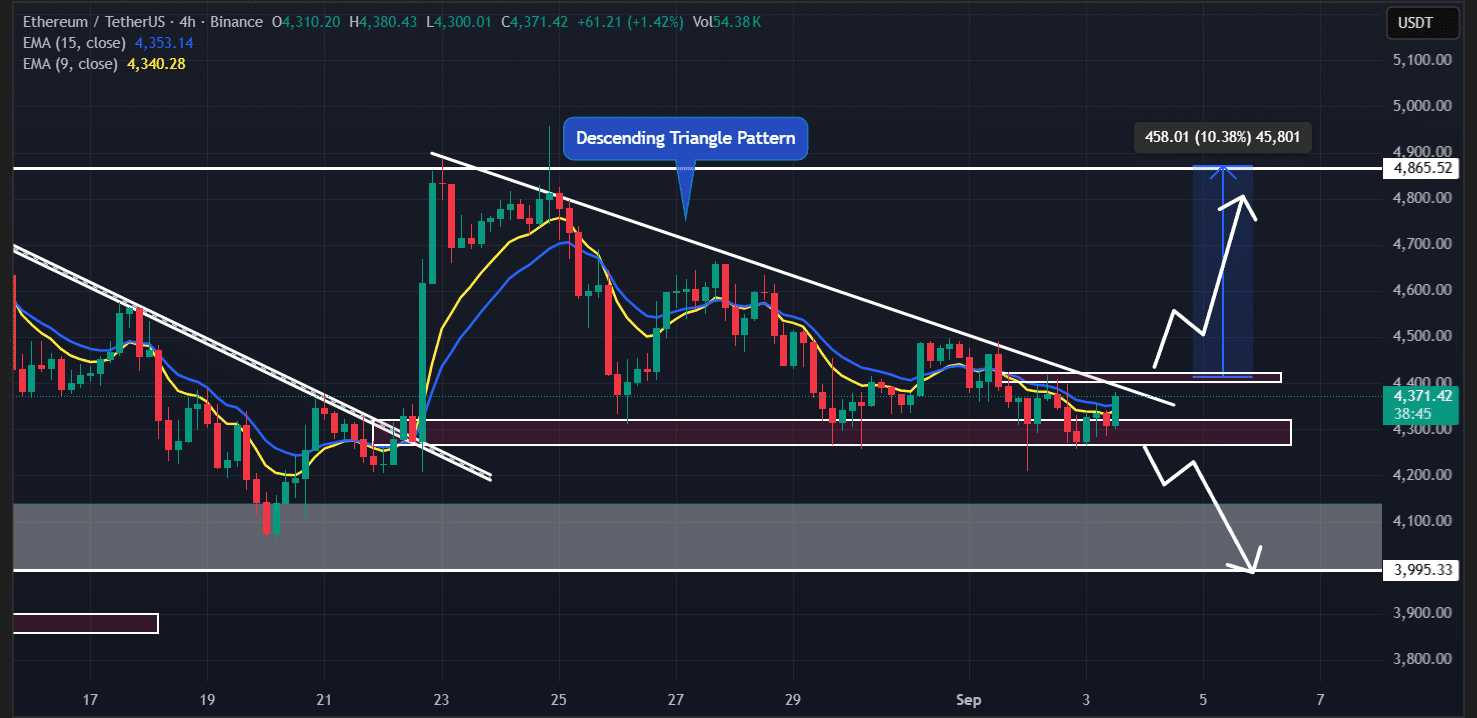| COINOTAG recommends • Exchange signup |
| 💹 Trade with pro tools |
| Fast execution, robust charts, clean risk controls. |
| 👉 Open account → |
| COINOTAG recommends • Exchange signup |
| 🚀 Smooth orders, clear control |
| Advanced order types and market depth in one view. |
| 👉 Create account → |
| COINOTAG recommends • Exchange signup |
| 📈 Clarity in volatile markets |
| Plan entries & exits, manage positions with discipline. |
| 👉 Sign up → |
| COINOTAG recommends • Exchange signup |
| ⚡ Speed, depth, reliability |
| Execute confidently when timing matters. |
| 👉 Open account → |
| COINOTAG recommends • Exchange signup |
| 🧭 A focused workflow for traders |
| Alerts, watchlists, and a repeatable process. |
| 👉 Get started → |
| COINOTAG recommends • Exchange signup |
| ✅ Data‑driven decisions |
| Focus on process—not noise. |
| 👉 Sign up → |
| COINOTAG recommends • Professional traders group |
| 💎 Join a professional trading community |
| Work with senior traders, research‑backed setups, and risk‑first frameworks. |
| 👉 Join the group → |
| COINOTAG recommends • Professional traders group |
| 📊 Transparent performance, real process |
| Spot strategies with documented months of triple‑digit runs during strong trends; futures plans use defined R:R and sizing. |
| 👉 Get access → |
| COINOTAG recommends • Professional traders group |
| 🧭 Research → Plan → Execute |
| Daily levels, watchlists, and post‑trade reviews to build consistency. |
| 👉 Join now → |
| COINOTAG recommends • Professional traders group |
| 🛡️ Risk comes first |
| Sizing methods, invalidation rules, and R‑multiples baked into every plan. |
| 👉 Start today → |
| COINOTAG recommends • Professional traders group |
| 🧠 Learn the “why” behind each trade |
| Live breakdowns, playbooks, and framework‑first education. |
| 👉 Join the group → |
| COINOTAG recommends • Professional traders group |
| 🚀 Insider • APEX • INNER CIRCLE |
| Choose the depth you need—tools, coaching, and member rooms. |
| 👉 Explore tiers → |
Ethereum whales have deposited millions to exchanges and opened large short positions, raising near-term downside risk for ETH. Support at $4,260 is critical — a break could push ETH under $4,000, while clearing $4,415 may trigger a 10% rally toward $4,865.
| COINOTAG recommends • Exchange signup |
| 📈 Clear interface, precise orders |
| Sharp entries & exits with actionable alerts. |
| 👉 Create free account → |
| COINOTAG recommends • Exchange signup |
| 🧠 Smarter tools. Better decisions. |
| Depth analytics and risk features in one view. |
| 👉 Sign up → |
| COINOTAG recommends • Exchange signup |
| 🎯 Take control of entries & exits |
| Set alerts, define stops, execute consistently. |
| 👉 Open account → |
| COINOTAG recommends • Exchange signup |
| 🛠️ From idea to execution |
| Turn setups into plans with practical order types. |
| 👉 Join now → |
| COINOTAG recommends • Exchange signup |
| 📋 Trade your plan |
| Watchlists and routing that support focus. |
| 👉 Get started → |
| COINOTAG recommends • Exchange signup |
| 📊 Precision without the noise |
| Data‑first workflows for active traders. |
| 👉 Sign up → |
-
Whale deposits and shorts increase immediate sell pressure on ETH.
-
Critical support sits at $4,260; resistance to watch is $4,415 for a bullish reversal.
-
24h trading volume rose ~11%, and leveraged positions on Hyperliquid amplify liquidation risk.
Meta description: Ethereum whales offload millions in ETH as price tests triangle support near $4,260 — read concise analysis, key levels and trading takeaways.
What is driving the recent Ethereum whales activity?
Ethereum whales are moving large ETH amounts to exchanges and allocating stablecoins to open short positions, signaling profit-taking and elevated selling interest. On-chain traces show multi-million-dollar transfers and concentrated leveraged shorts that increase downside pressure as ETH tests technical support.
| COINOTAG recommends • Traders club |
| ⚡ Futures with discipline |
| Defined R:R, pre‑set invalidation, execution checklists. |
| 👉 Join the club → |
| COINOTAG recommends • Traders club |
| 🎯 Spot strategies that compound |
| Momentum & accumulation frameworks managed with clear risk. |
| 👉 Get access → |
| COINOTAG recommends • Traders club |
| 🏛️ APEX tier for serious traders |
| Deep dives, analyst Q&A, and accountability sprints. |
| 👉 Explore APEX → |
| COINOTAG recommends • Traders club |
| 📈 Real‑time market structure |
| Key levels, liquidity zones, and actionable context. |
| 👉 Join now → |
| COINOTAG recommends • Traders club |
| 🔔 Smart alerts, not noise |
| Context‑rich notifications tied to plans and risk—never hype. |
| 👉 Get access → |
| COINOTAG recommends • Traders club |
| 🤝 Peer review & coaching |
| Hands‑on feedback that sharpens execution and risk control. |
| 👉 Join the club → |
How large were the on-chain moves and where were funds deposited?
One whale transferred 7,500 ETH (~$32.3M) into Binance, then retained roughly 7,702 ETH after prior withdrawals totaling 15,202 ETH between July 20 and August 12 at an average price near $3,869. Another whale deposited 3.25M USDC into Hyperliquid and opened ETH shorts with 25x leverage, positioning about 3,000 ETH (~$13M).
Why does leveraged shorting matter for ETH price action?
High-leverage short positions concentrate liquidation risk. If price moves unexpectedly, forced liquidations can cause amplified volatility. With shorts placed at high liquidation points, margin dynamics could either accelerate declines or, if shorts are squeezed, produce rapid short-covering rallies.
How is ETH price reacting to whale moves and technical signals?
ETH slipped about 1.2% over 24 hours to $4,306 at press time, while 24-hour trading volume rose roughly 11% versus the prior day. Price is testing the base of a descending triangle on the 4-hour chart, and a recent 9-day EMA crossing below the 15-day EMA signals short-term bearish momentum.
When will downside momentum likely accelerate?
Downside momentum could accelerate if ETH breaks below $4,260. Such a move would expose targets under $4,000 based on recent technical structure and prior support zones. Conversely, clearing the descending trendline and $4,415 resistance would shift near-term bias bullish.
| COINOTAG recommends • Exchange signup |
| 📈 Clear control for futures |
| Sizing, stops, and scenario planning tools. |
| 👉 Open futures account → |
| COINOTAG recommends • Exchange signup |
| 🧩 Structure your futures trades |
| Define entries & exits with advanced orders. |
| 👉 Sign up → |
| COINOTAG recommends • Exchange signup |
| 🛡️ Control volatility |
| Automate alerts and manage positions with discipline. |
| 👉 Get started → |
| COINOTAG recommends • Exchange signup |
| ⚙️ Execution you can rely on |
| Fast routing and meaningful depth insights. |
| 👉 Create account → |
| COINOTAG recommends • Exchange signup |
| 📒 Plan. Execute. Review. |
| Frameworks for consistent decision‑making. |
| 👉 Join now → |
| COINOTAG recommends • Exchange signup |
| 🧩 Choose clarity over complexity |
| Actionable, pro‑grade tools—no fluff. |
| 👉 Open account → |
Frequently Asked Questions
Are these whale moves proof of an imminent crash?
Not necessarily. Large deposits and shorts signal increased risk but do not guarantee a crash. Market liquidity, broader order flow, and institutional behavior all influence whether selling pressure turns into a sustained decline.
How should traders incorporate this information into risk management?
Use defined position sizing, set stop-loss levels around technical invalidation points, and monitor on-chain indicators and exchange flows to adjust exposure as conditions change.
| COINOTAG recommends • Members‑only research |
| 📌 Curated setups, clearly explained |
| Entry, invalidation, targets, and R:R defined before execution. |
| 👉 Get access → |
| COINOTAG recommends • Members‑only research |
| 🧠 Data‑led decision making |
| Technical + flow + context synthesized into actionable plans. |
| 👉 Join now → |
| COINOTAG recommends • Members‑only research |
| 🧱 Consistency over hype |
| Repeatable rules, realistic expectations, and a calmer mindset. |
| 👉 Get access → |
| COINOTAG recommends • Members‑only research |
| 🕒 Patience is an edge |
| Wait for confirmation and manage risk with checklists. |
| 👉 Join now → |
| COINOTAG recommends • Members‑only research |
| 💼 Professional mentorship |
| Guidance from seasoned traders and structured feedback loops. |
| 👉 Get access → |
| COINOTAG recommends • Members‑only research |
| 🧮 Track • Review • Improve |
| Documented PnL tracking and post‑mortems to accelerate learning. |
| 👉 Join now → |
Key Takeaways
- Whale activity: Large ETH deposits to exchanges and substantial USDC allocations to Hyperliquid shorts raise near-term downside risk.
- Critical levels: Support at $4,260 is decisive; resistance at $4,415 must clear for bullish confirmation.
- Actionable insight: Traders should combine on-chain flows with technical risk management and watch leverage exposure around major positions.
Conclusion
COINOTAG analysis shows that concentrated whale deposits and leveraged short positions have increased downside risk for ETH as price tests the $4,260 triangle support. Traders should monitor exchange inflows, volume spikes, and the $4,415 resistance level for signals. Stay disciplined with risk management and watch on-chain indicators for confirmation.
| COINOTAG recommends • Exchange signup |
| 🎯 Focus on process over noise |
| Plan trades, size positions, execute consistently. |
| 👉 Sign up → |
| COINOTAG recommends • Exchange signup |
| 🛠️ Simplify execution |
| Keep decisions clear with practical controls. |
| 👉 Get started → |
| COINOTAG recommends • Exchange signup |
| 📊 Make data your edge |
| Use depth and alerts to avoid guesswork. |
| 👉 Open account → |
| COINOTAG recommends • Exchange signup |
| 🧭 Be prepared, not reactive |
| Turn setups into rules before you trade. |
| 👉 Create account → |
| COINOTAG recommends • Exchange signup |
| ✍️ Plan first, then act |
| Entries, exits, and reviews that fit your routine. |
| 👉 Join now → |
| COINOTAG recommends • Exchange signup |
| 🧩 Consistency beats intensity |
| Small, repeatable steps win the long run. |
| 👉 Sign up → |
As Ethereum’s [ETH] price moved sideways, some whales began offloading their ETH holdings. That’s why this whale activity has raised concerns about a potential price decline in the coming days.
Ethereum price at risk as whales offload millions in ETH
Lookonchain shared data showing that the whale wallet address 0x3e38 dumped 7,500 ETH worth $32.33 million into Binance.
| COINOTAG recommends • Premium trading community |
| 🏛️ WAGMI CAPITAL — Premium Trading Community |
| Strategic insights, exclusive opportunities, professional support. |
| 👉 Join WAGMI CAPITAL → |
| COINOTAG recommends • Premium trading community |
| 💬 Inner Circle access |
| See members share real‑time PnL and execution notes in chat. |
| 👉 Apply for Inner Circle → |
| COINOTAG recommends • Premium trading community |
| 🧩 Turn theses into trades |
| Reusable templates for entries, risk, and review—end to end. |
| 👉 Join the club → |
| COINOTAG recommends • Premium trading community |
| 💡 Long‑term mindset |
| Patience and discipline over noise; a process that compounds. |
| 👉 Get started → |
| COINOTAG recommends • Premium trading community |
| 📚 Education + execution |
| Courses, playbooks, and live market walkthroughs—learn by doing. |
| 👉 Get access → |
| COINOTAG recommends • Premium trading community |
| 🔒 Members‑only research drops |
| Curated analyses and private briefings—quality over quantity. |
| 👉 Join WAGMI CAPITAL → |


| COINOTAG recommends • Exchange signup |
| 🧱 Execute with discipline |
| Watchlists, alerts, and flexible order control. |
| 👉 Sign up → |
| COINOTAG recommends • Exchange signup |
| 🧩 Keep your strategy simple |
| Clear rules and repeatable steps. |
| 👉 Open account → |
| COINOTAG recommends • Exchange signup |
| 🧠 Stay objective |
| Let data—not emotion—drive actions. |
| 👉 Get started → |
| COINOTAG recommends • Exchange signup |
| ⏱️ Trade when it makes sense |
| Your plan sets the timing—not the feed. |
| 👉 Join now → |
| COINOTAG recommends • Exchange signup |
| 🌿 A calm plan for busy markets |
| Set size and stops first, then execute. |
| 👉 Create account → |
| COINOTAG recommends • Exchange signup |
| 🧱 Your framework. Your rules. |
| Design entries/exits that fit your routine. |
| 👉 Sign up → |
Source: X
Despite the notable sell-off, the whale wallet still held 7,702 ETH worth $33 million after withdrawing 15,202 ETH between the 20th of July and the 12th of August at an average of $3,869.
This indicates that the whale is selling its ETH to take profits, as the price has continued to move sideways over the past week.
Meanwhile, another whale wallet address, 0xd8ef, deposited 3.25 million USDC into Hyperliquid [HYPE] and opened ETH short positions with 25x leverage.
This particular whale positioned 3,000 ETH worth $12.98 million, with liquidation points placed at the $5,291.9 level.
ETH slips as traders watch key levels
Together, these moves highlighted weakening sentiment.
Over the past 24 hours, ETH slipped by 1.20% to $4,306 at press time. Not to mention, this decline has triggered a surge in trader and investor participation.
CoinMarketCap data revealed that ETH’s 24-hour trading volume soared by 11% compared to the previous day.
This bearish whale activity coincided with ETH hovering near the base of a descending triangle on the four-hour chart. COINOTAG’s analysis noted no clear directional bias yet.
However, the 9-day EMA crossed below the 15-day EMA, flashing a bearish signal.


Source: TradingView
Since the 15th of August, ETH has recorded four such crossovers, each followed by notable declines, heightening concerns of another dip.
And so, based on recent price action, ETH’s downside momentum could be activated only if the price falls below the $4,260 level.
Now, if that happens, Ethereum may decline further to below $4,000.
On the other hand, a rally could be possible if ETH clears the descending trendline resistance and the hurdle at $4,415. If this occurs, ETH could soar by 10% and reach the $4,865 level.
| COINOTAG recommends • Members‑only research |
| 📌 Curated setups, clearly explained |
| Entry, invalidation, targets, and R:R defined before execution. |
| 👉 Get access → |
| COINOTAG recommends • Members‑only research |
| 🧠 Data‑led decision making |
| Technical + flow + context synthesized into actionable plans. |
| 👉 Join now → |
| COINOTAG recommends • Members‑only research |
| 🧱 Consistency over hype |
| Repeatable rules, realistic expectations, and a calmer mindset. |
| 👉 Get access → |
| COINOTAG recommends • Members‑only research |
| 🕒 Patience is an edge |
| Wait for confirmation and manage risk with checklists. |
| 👉 Join now → |
| COINOTAG recommends • Members‑only research |
| 💼 Professional mentorship |
| Guidance from seasoned traders and structured feedback loops. |
| 👉 Get access → |
| COINOTAG recommends • Members‑only research |
| 🧮 Track • Review • Improve |
| Documented PnL tracking and post‑mortems to accelerate learning. |
| 👉 Join now → |











